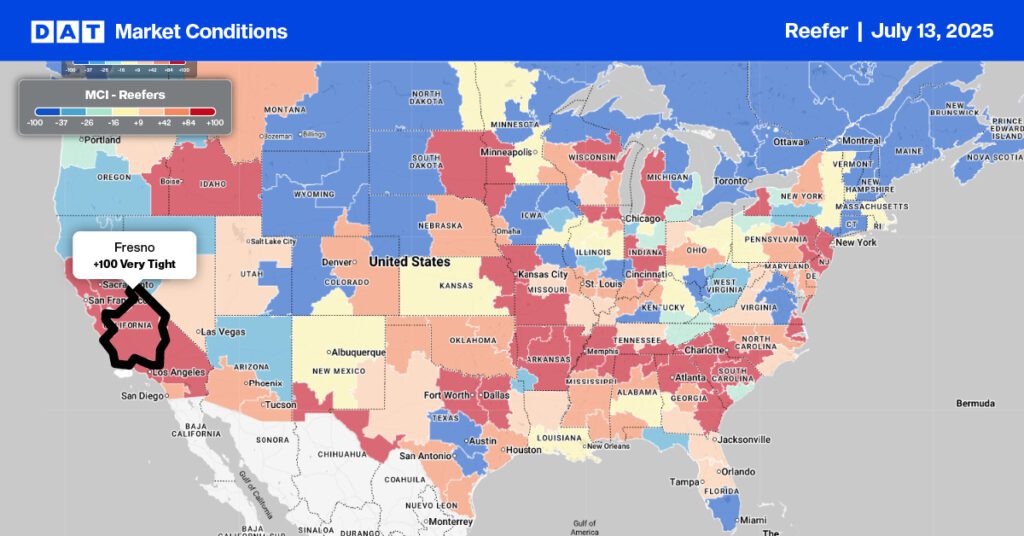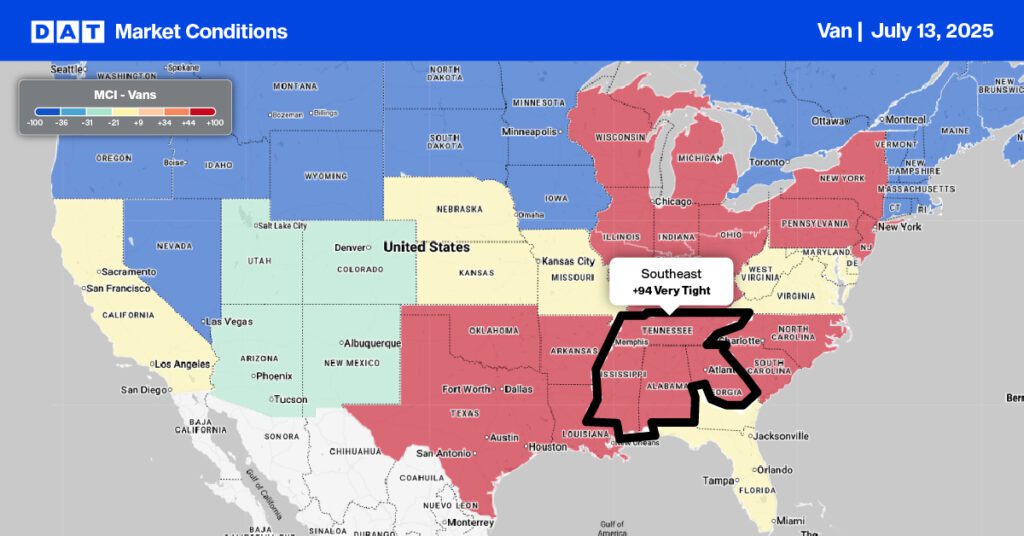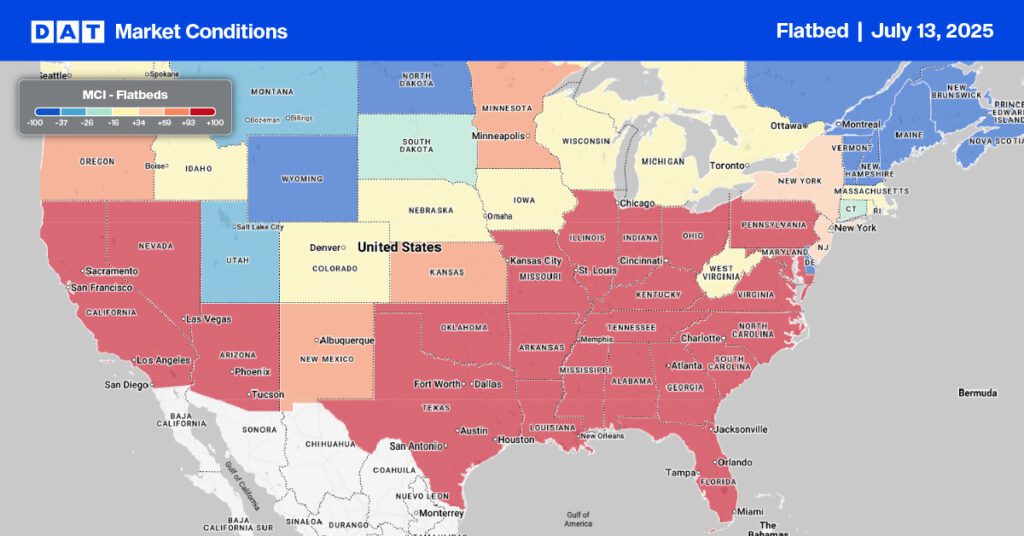According to the latest data from the USDA, the 2022 produce season is but a shadow of last year’s bumper crop, with produce volumes at the end of April down 31% y/y, or a shortfall of 63,113 weekly truckloads of produce. For the entire month of April, truckload carriers hauled 210,642 fewer truckloads of produce compared to April 2021, but that’s just 4% lower than the 10-year average monthly truckload volume for April. Even though the year-over-year comparison to 2021 paints a gloomy outlook, we appear to be returning to more seasonal volumes seen in past non-pandemic years.
That doesn’t fully help explain the slow start to this season, though, especially in California, where other factors are at work. This year, contributing to lower volumes is the much slower start in California, currently ravaged by water shortages amidst a multi-year drought. Truckloads of produce from the Golden State are down 84% y/y compared to April last year, when 524,595 truckloads were shipped. This April, it’s just 84,436, noting that late reporting from growers will most likely boost this number. Last year was excellent for California growers and almost an outlier in statistical terms. Removing 2021 volumes, we can see from the chart below that 2022 is much closer to the 10-year average volume for April, albeit tracking closely with 2017 volumes so far.
Compared to the 10-year April average excluding 2021, California carriers hauled 29% or 34,657 fewer truckloads last month, confirming how much of a slower start we’re seeing this year. California citrus volumes are under-reported at the moment, so we expect these numbers, when added, to boost state totals. Contributing to lower volumes is lettuce, which is down 4.8% y/y, potatoes down 36% y/y, while strawberries are off to a good start and are currently up 30% y/y.
Get the clearest, most accurate view of the truckload marketplace with data from DAT iQ.
Tune into DAT iQ Live, live on YouTube or LinkedIn, 10am ET every Tuesday.
What about other produce regions – are they also off to a slow start?
In the Southeast Region (AL, GA, FL, MS, LA, NC, SC), overall produce volumes are down 1.9% y/y due mainly to lower Florida volumes, which are down 2.1% y/y due to corn and oranges underperforming this season. Georgia state volumes are up 3.7% y/y after a solid start to the Vidalia Onion season, while volumes in neighboring South Carolina are up 22.1% y/y due to higher volumes of collard greens (up 34.1% y/y) and kale (up 19.3% y/y).
On the import side, produce volumes from Mexico are down 3.1% y/y. However, compared to 2021, where volumes were up 21% y/y. A more realistic comparison would be 2019, where volumes are actually up 15.7% this year. The highest volume of commodities imported from Mexico includes tomatoes (15%), avocados (8%), cucumbers (8%), bell peppers (7%), squash (5%), and watermelons (5%). Tomato volumes are up 15.6% y/y, along with cucumbers (up 3.9% y/y) and bell peppers (up 4.6% y/y), while avocados volumes are down 20.1% y/y.
Are we expecting spot rates to increase in the lead-up to July 4 like they usually do each year?
Typically DAT sees reefer spot rates bottom out around now and start increasing to the Independence Day seasonal peak, but not this year. Reefer spot rates have dropped by $0.77/mile so far this year and show no sign of stopping. That’s great news for growers following last season’s record-high freight rates but very concerning for the thousands of small carriers who rely heavily on produce season in the second and third quarters. More so for those carriers struggling with record-high diesel costs.



